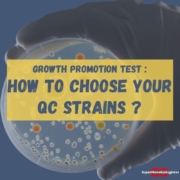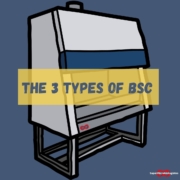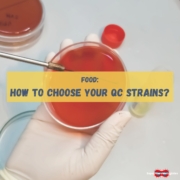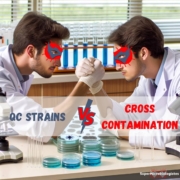Pharma Growth Promotion Tests: How to choose your calibrated QC strains?
Most pharmaceutical QC microbiology laboratories routinely use QC (Quality Control) strains to verify that their culture media are capable of growing microorganisms from potential contamination. We call it a GPT, a Growth Promotion Test (still performed by human microbiologists and not an AI).
To simplify their life, more and more labs are opting for ready-to-use control strains.
This can be a good choice, if… you choose a reliable supplier.
In this article, you will find 10 criteria to consider when choosing a supplier of quantitative microorganisms strains.
After reading it, you will make the right choice.
- What is a growth promotion test?
- Criteria for choosing your control strains
- Bonus: Environmental strains
Best QC strains
Pharma : The best QC Strain suppliers
We polled the SuperMicrobiologists.
Here are their favorite QC Strains
What is a growth promotion test?
A culture medium growth promotion test verifies the media’s ability to promote the growth of microorganisms.
This saves you from asking this question:
“Are my plates empty because there’s no contamination or is it because the culture medium I use is a… piece of crap?!”
To perform a GPT, a known number of microorganisms (usually <100 CFU) is inoculated onto the tested medium (e.g.: EM media; Environmental Monitoring media). The medium is then incubated under appropriate conditions for a defined period.
Successful microbial growth, indicated by visible colonies or turbidity, confirms the medium’s ability to support growth. If so, the batch of culture media is valid and can be used by the lab. If not, then it’s trouble… we need to investigate*!
“Having complete confidence in your control strains saves precious time.“
The growth promotion tests are very well described in the various pharmacopeias (for growth promotion tests, chapters Ph. Eur 2.6.12, the USP <61> and the JP 4.05 are aligned). All the necessary information can be found there, including the names of the strains to use to challenge the culture media.
The 5 most used control strains are:
- Staphylococcus aureus (ATCC 6538, NCIMB 9518, CIP 4.83, NBRC 13276)
- Pseudomonas aeruginosa (ATCC 9027, NCIMB 8626, CIP 82.118, NBRC 13275)
- Bacillus subtilis (ATCC 6633, NCIMB 8054, CIP 52.62, NBRC 3134)
- Candida albicans (ATCC 10231, NCPF 3179, IP 48.72, NBRC 1594)
- Aspergillus brasiliensis (ATCC 16404, IMI 149007, IP 1431.83, NBRC 945
ATCC, NCIMB, etc… these are the names of the collections. We will tell you more later.
*During investigations, while we should only question the quality of the culture medium, often much time is spent questioning the reliability of control strains (concentration, purity, physiological state) to explain why the growth promotion test failed. Having complete confidence in your control strains saves precious time, so here are the criteria to consider gaining this confidence.
Here are the criteria you need to take into account to earn that trust.
Criteria for choosing your calibrated control strains:
1 – Strain contamination
While it is quite rare, a RTU (Ready To Use) control strain preparation could be contaminated. To verify the reliability of the supplier, there is nothing better than communicating with other laboratories that are already their clients.
Do not hesitate to ask other SuperMicrobiologists on our LinkedIN page or you can read our article “Pharma growth promotion test: The best calibrated control strains.”
2 – Ease of Use
Simplicity is key: the fewer preparation steps, the lower the risk of errors.
Depending on the supplier, the number of steps required to prepare the strain can vary. Steps to consider include rehydration time, dissolution temperature, number of dilutions, and time spent in the vortex.
Each of these steps can significantly influence your result.
Our advice: Favor the simplest protocols. Ideally, the goal should be to use as few steps as possible to achieve a solution containing fewer than 100 cfu/0.1ml.
3 – Number of Analyses per Packaging
Some packaging options offer 10 analyses (10 times 0.1ml), others 50 or 100. The problem with calibrated strains is that once reconstituted, they are only stable for a few hours. If you have too many, you’ll have to throw them away.
This is not a question of strain quality, but of cost. Suppliers often give you a cost per test or per pellet. But this does not include “losses”.
To calculate your cost, define your needs:
For each strain, how many 0.1ml inoculates (<100 cfu) do you need?
This calculation is lab dependent. It depends on the number of media you’re testing, the number of replicates (old batch vs. new batch? duplicates?, etc.).
To compare 2 suppliers, you’ll need to calculate your cost per fertility test…including “losses”.
4 – Strain shelflife
There’s nothing worse than having to throw away RTU control strains because they’ve expired.
So, it’s important to choose a supplier who guarantees to deliver strains with the longest possible shelf life.
You can expect 6 to 12 months of shelf life… Suppliers will hate us for saying that!
5 – Strain storage temperature
The storage temperatures vary from one supplier to another. There are :
- Room temperature (which is quite rare)
- Refrigerator (between 2 and 8°C)
- Freezer (-20°C).
In a laboratory where space is often limited, this storage temperature requirement becomes an important factor to consider when choosing a strain.
To limit the number of people coming and going, strains should be stored in the lab next to the BSC (BioSafety Cabinet) where they are used.
6 – Transport validation for freeze-dried strains
Some RTU strains come from very far away (USA, Australia, Spain, UK, etc…). Before arriving in your lab, they may even pass through several storage warehouses.
Ask your supplier how temperature is managed during transport? If the storage temperature is different from the transport temperature, ask for the validation report.
Some strains can be very sensitive to temperature variations… especially a certain P. aeruginosa!
7 – Availability of all strains
Check that your supplier offers all the strains you’ll need. It’s always easier to have just one supplier, with just one protocol.
Another important point to check is where the strains are stored. Can they be readily available when you need them? There’s nothing worse than not being able to release a batch of culture media because you don’t have the strain to control it.
8 – Are ATCC collection strains compulsory?
It’s essential to ensure that the strain supplied corresponds to that required by the pharmacopeia.
Whereas a few years ago, only ATCC (American Type Culture Collection) strains were considered, today equivalence with other national collections is well recognized.
Pharmacopeias even mention the following collections:
- NCTC/NCPF: “National Collection of Type Cultures” and “National Collection of Pathogenic Fungi”, a British collection.
- NBRC: “NITE Biological Resource Center”.
- DSMZ: “Deutsche Sammlung von Mikroorganismen und Zellkulturen” (German Collection of Microorganisms and Cell Cultures). It is one of the world’s largest banks of biological resources, located in Germany.
Other equivalences between collections may exist. The website of the World Data Centre for Microorganisms (WDCM) offers a practical tool for identifying these equivalences and thus facilitating the appropriate selection of strains.
9 – Supplier support
We don’t want to jinx you, but at some point you’ll have a problem (or at least questions) with your QC (Quality Control)l strains. When it happens, you will need quick and reliable answers from your supplier.
That’s why it’s a good idea to choose a supplier who knows what he’s talking about!
Ask your supplier if they have an in-house QC strain specialist (application specialist).
Ask if training is included with the purchase of the strains (at least once a year). Even if the protocol is very simple, there are subtleties that are important to know!
Bonus: 10 – Environmental isolates
Pharmacopeias are increasingly encouraging pharmaceutical laboratories to use strains from their own environmental isolates. These are also known as environmental isolates.
Ideally, these strains should also be used for your growth Promotion tests.
When choosing a strain supplier, this point should not be overlooked… What to do with environmental strains?
More and more suppliers are offering to custom your environmental isolates in the same packaging as your other ready to use QC strains. This is an excellent initiative, as it means you only have a single preparation protocol for all your QC strains.
However, there are several points to check with your supplier:
Logistics for sending the strain
Sending a strain to a foreign country is not that easy… There are not only customs issues, but also a lot of paperwork to be completed for delivery.
Who takes care of it?
You or the supplier?
Between us, it’s better if it’s him, isn’t it?
Production time of custom environmental isolate
The production of a custom environmental isolate can take a long time. Even if the supplier can’t commit to a precise deadline (it’s often a real pain to produce!), he can at least give you a range of times.
Don’t be frightened if he gives you a lead time of 2 to 3 months from receipt of the strain.
The environmental isolate quality control
After production, the supplier must run quality control tests on the custom strain in order to provide you with a CoA (Certificate of Analysis).
Ask what tests are carried out:
What media are used to check strain concentration?
What is the incubation time and temperature?
Is strain identification planned? If so, what is the method?
Does the supplier commit to an expiration date?
Pricing
We rarely talk about price on SuperMicrobiologistes, but in this case it’s important.
How much does a custom environmental isolate preparation cost?
If you need to re-order it, how much will it cost?
We’ll let you be the judge of that…
How are subsequent productions going?
In your production area, you may encounter the same environmental isolate for several years. So, you might need to re-order it.
If so, does the supplier keep your strain?
If so, for how long?
Conclusion
In conclusion, the choice of calibrated control strains for Growth Promotion Tests (GPTs) in pharmaceutical microbiology laboratories is a critical decision that directly impacts the accuracy and reliability of culture media testing.
This guide has outlined essential criteria for selecting a supplier, from strain contamination and ease of use to environmental strain considerations and supplier support.
So now you’ve got all the information you need to choose the best supplier of ready-to-use lyophilized strains. Remember, the right control strains not only save time but also reinforce the credibility of your quality control lab.
Let us know in the comments which one you’ve chosen!

















Leave a Reply
Want to join the discussion?Feel free to contribute!